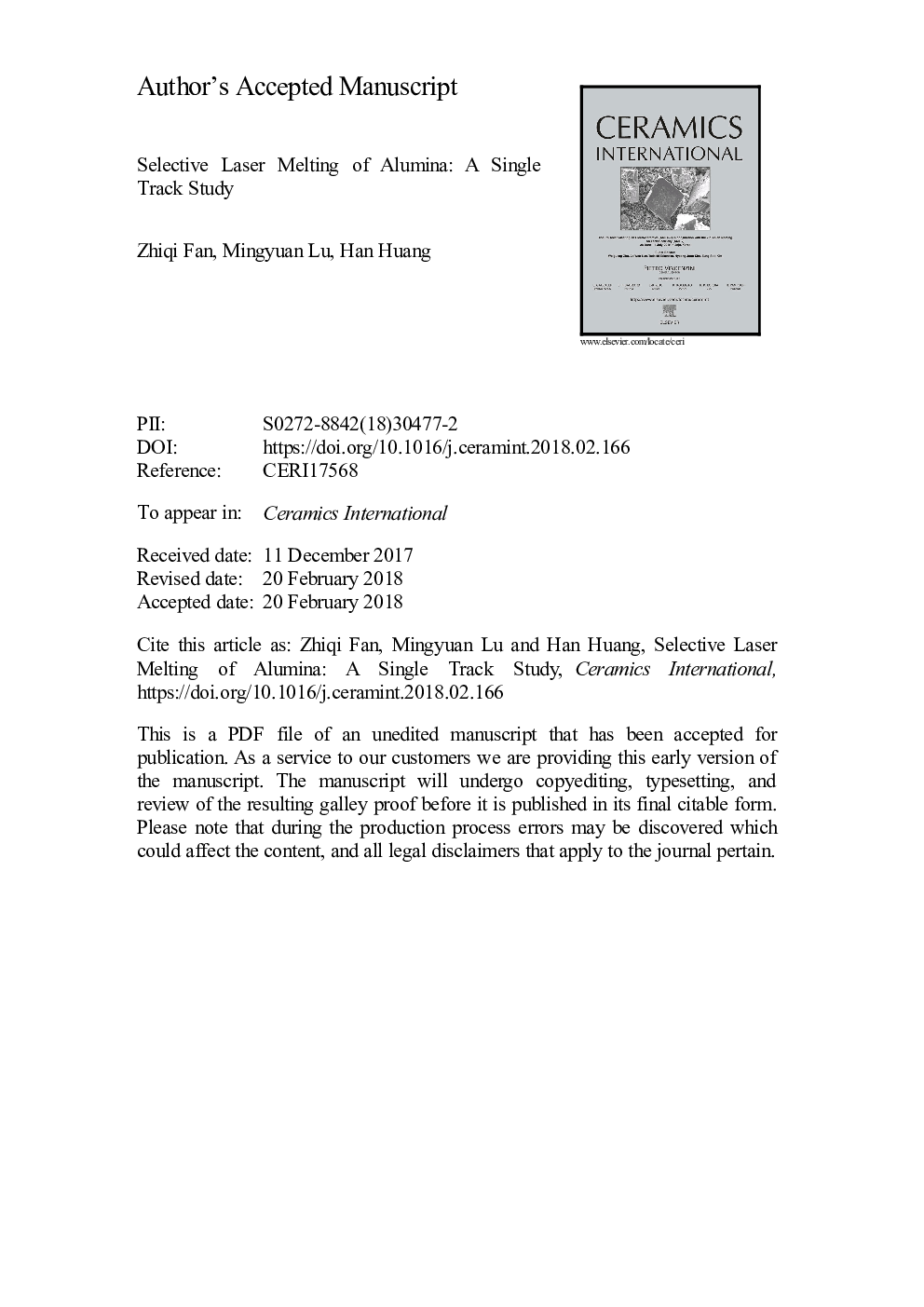| Article ID | Journal | Published Year | Pages | File Type |
|---|---|---|---|---|
| 7887943 | Ceramics International | 2018 | 44 Pages |
Abstract
Ceramics-based additive manufacturing is a complex process and the solidification mechanism and microstructural evolution are currently not fully understood. In this work, Al2O3 single tracks were formed using a customised selective laser melting (SLM) system equipped with a high power diode laser. The effects of laser energy density (LED) on geometry, microstructure and micro-mechanical properties of Al2O3 tracks were investigated. To better understand the solidification mechanism, a transient three-dimensional thermal model was developed for predicting the thermal behaviour of the melt pool. The results indicated the use of high LED gave rise to decreased viscosity and surface tension of the molten alumina and led to localized melting of the substrate. Both, in turn, enabled the formation of a continuous solidified track. The solidified tracks were primarily composed of columnar dendrite. When relatively high LED (â¥â¯25.7â¯kJ/m) was applied, equiaxed dendrite appeared along the central line near the track surface. The size of dendritic grains decreased with the decreased LED, attributed to the increased cooling rate at solidification interface. The micro-hardness of the solidified track was found to be inversely proportional to the grain size owning to grain boundary strengthening effect.
Related Topics
Physical Sciences and Engineering
Materials Science
Ceramics and Composites
Authors
Zhiqi Fan, Mingyuan Lu, Han Huang,
